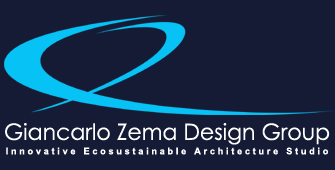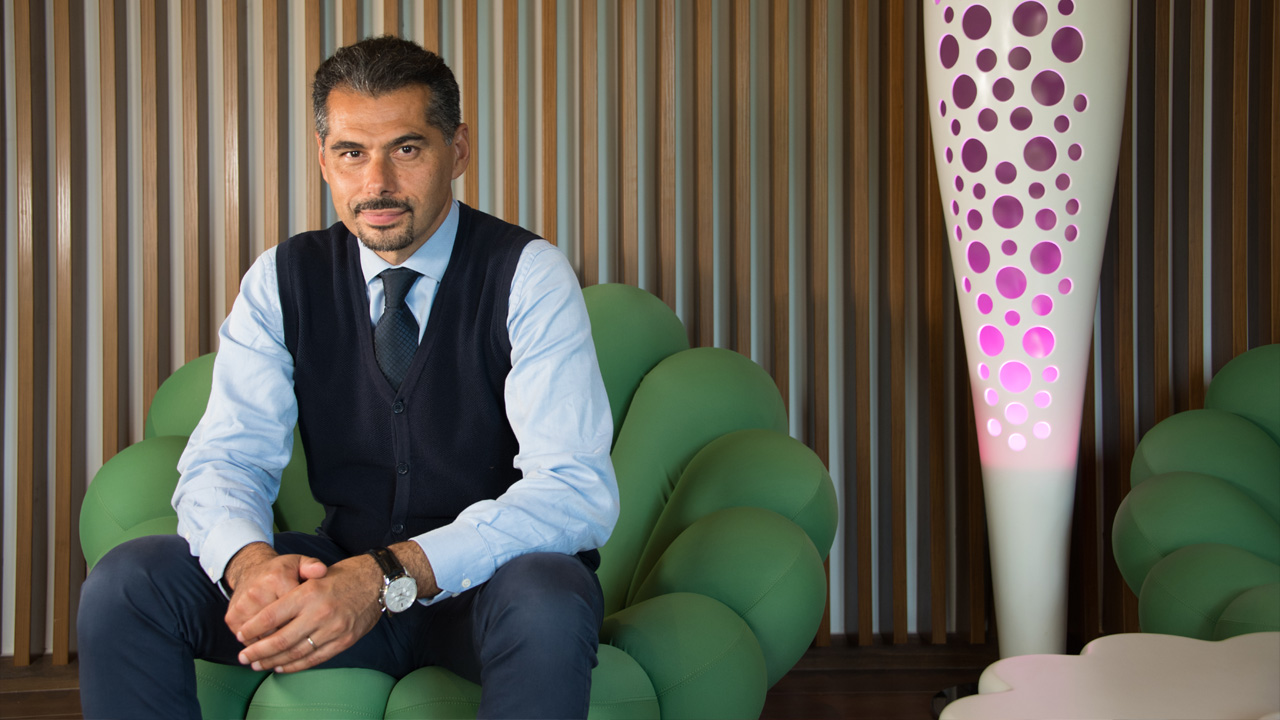
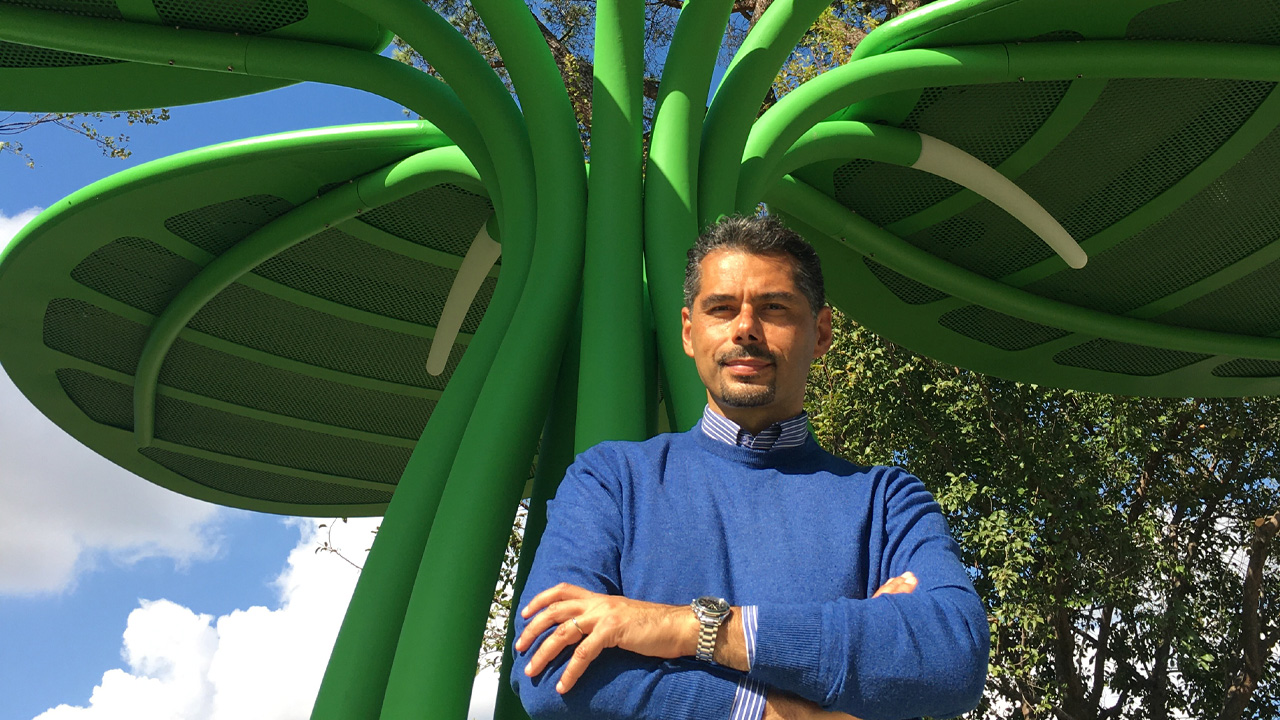
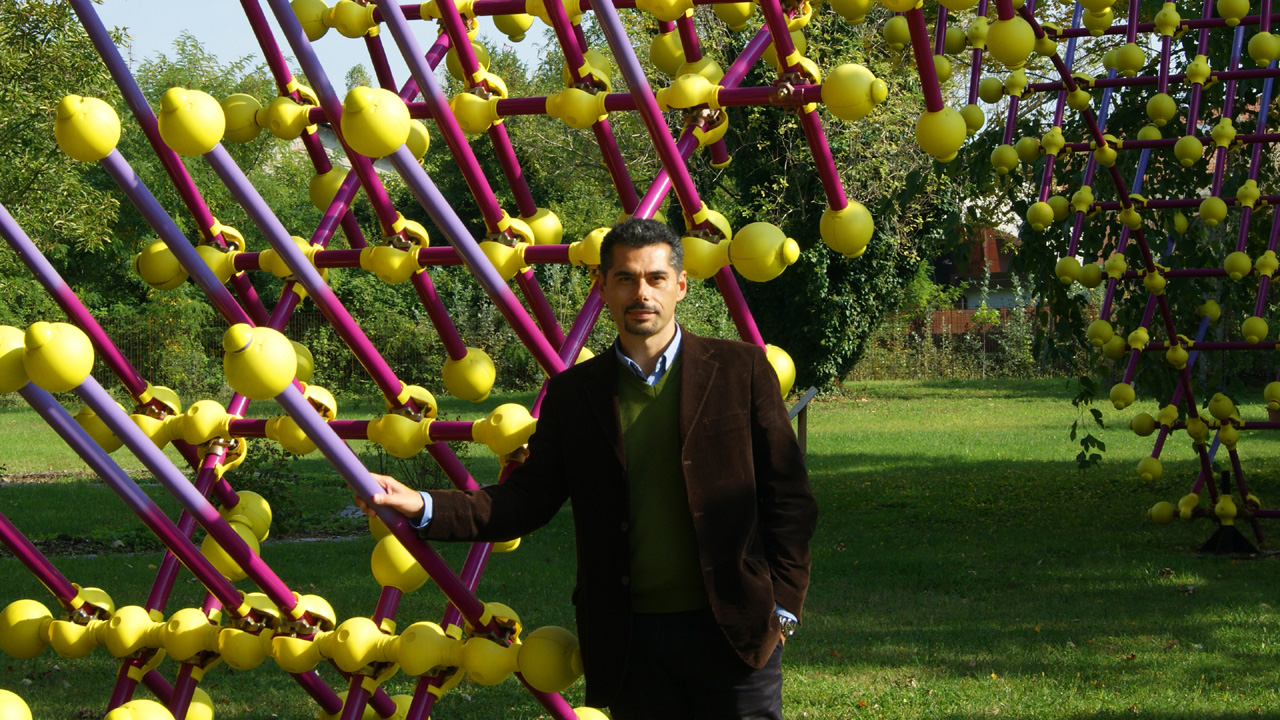
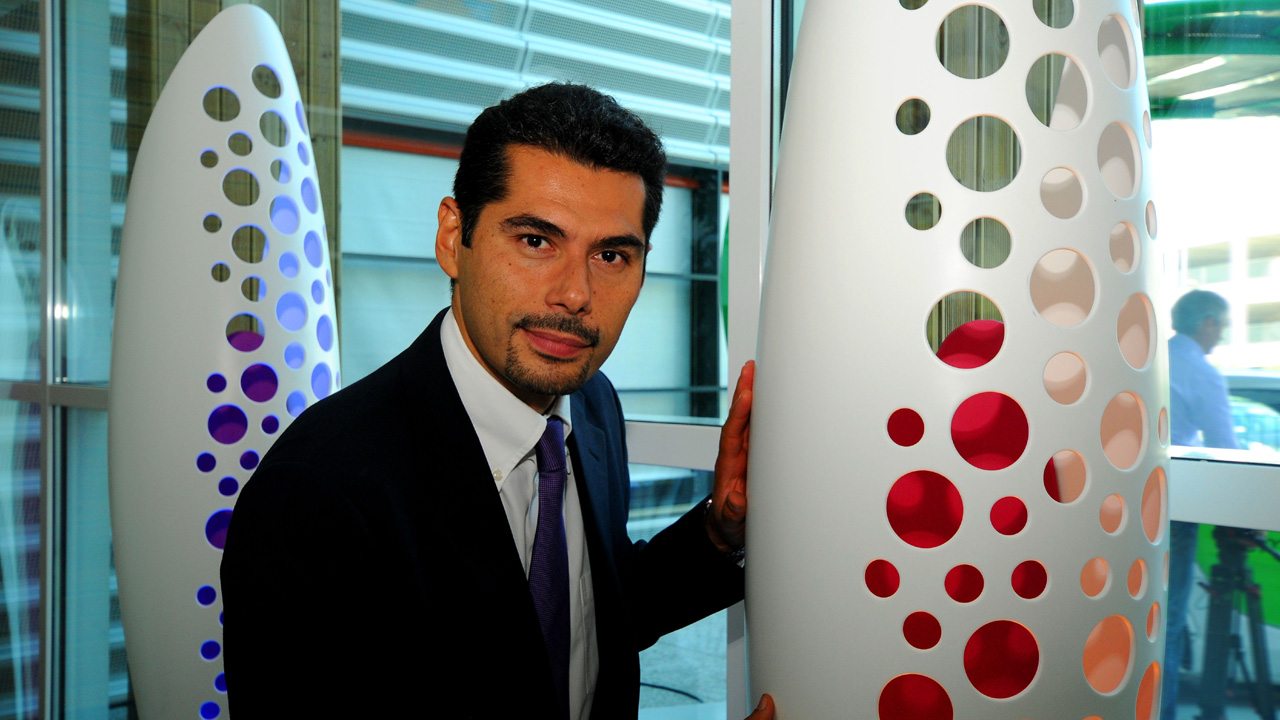
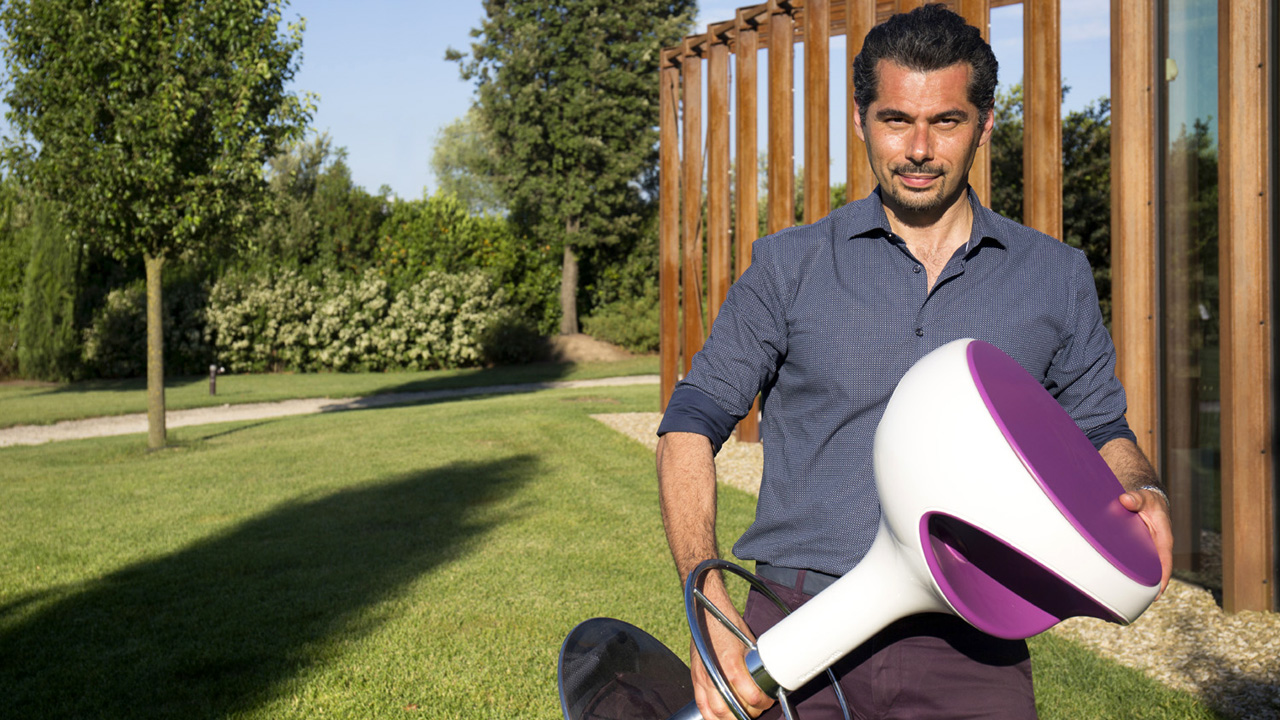
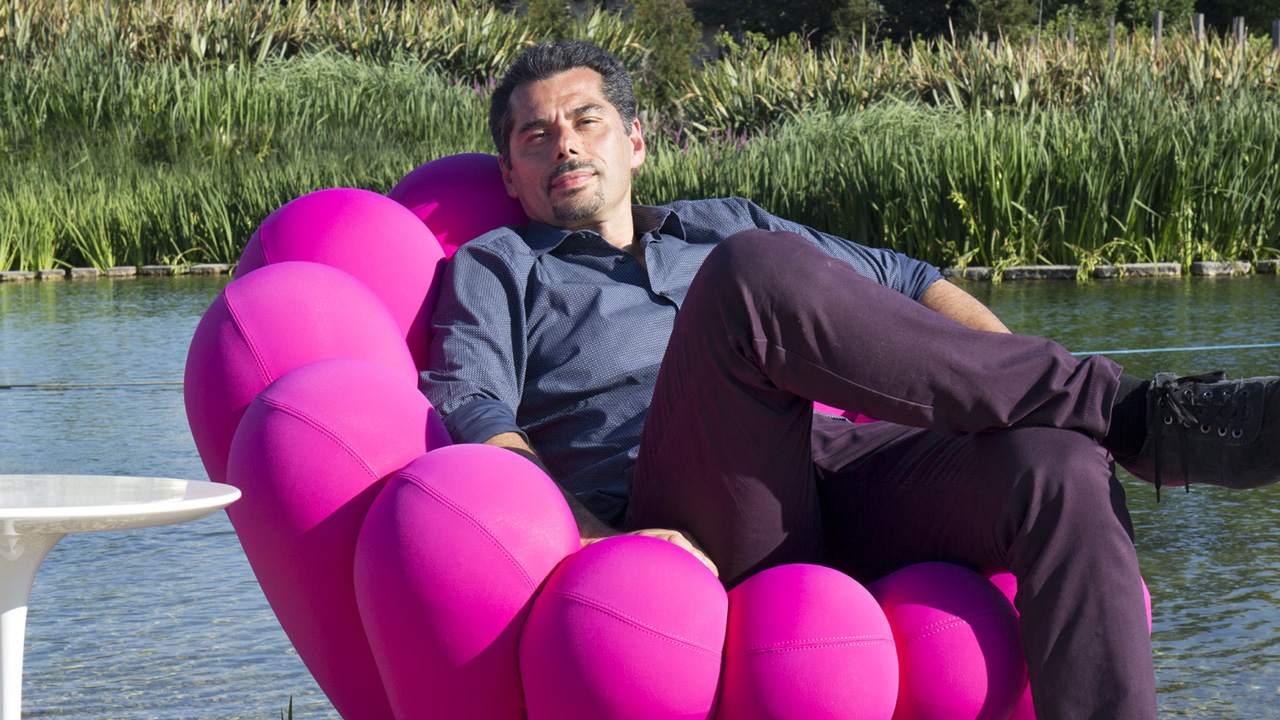
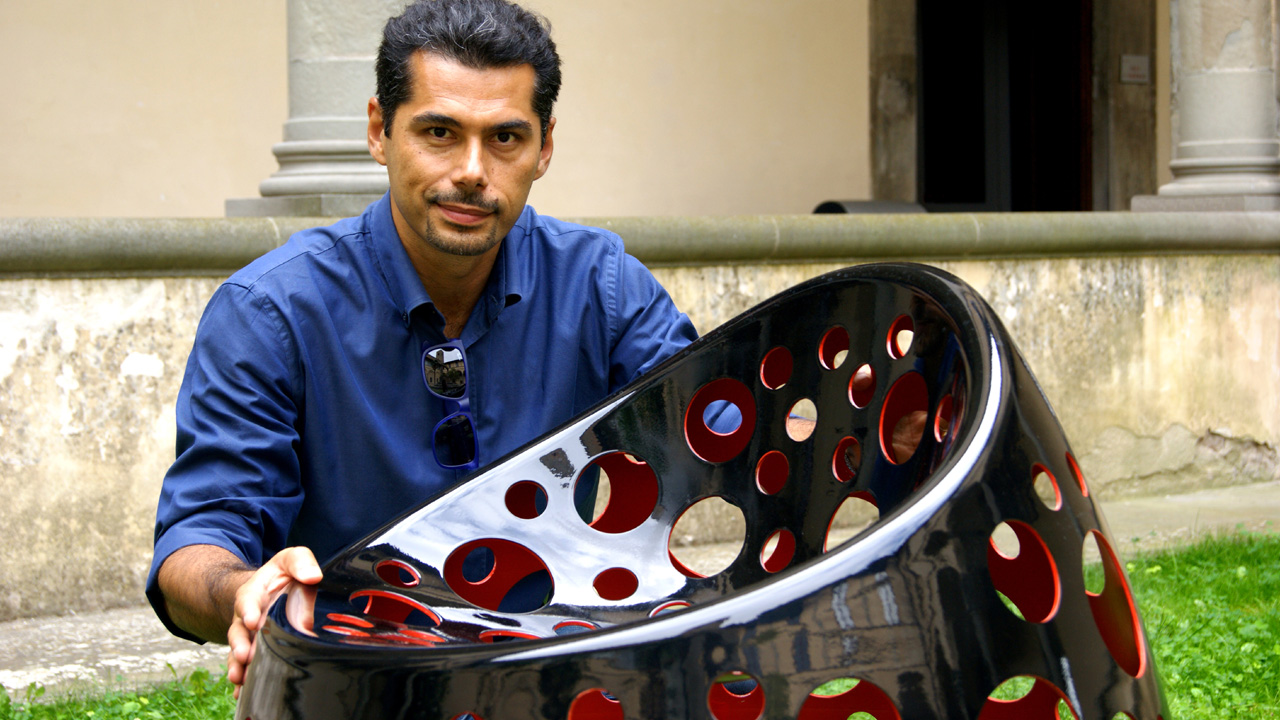
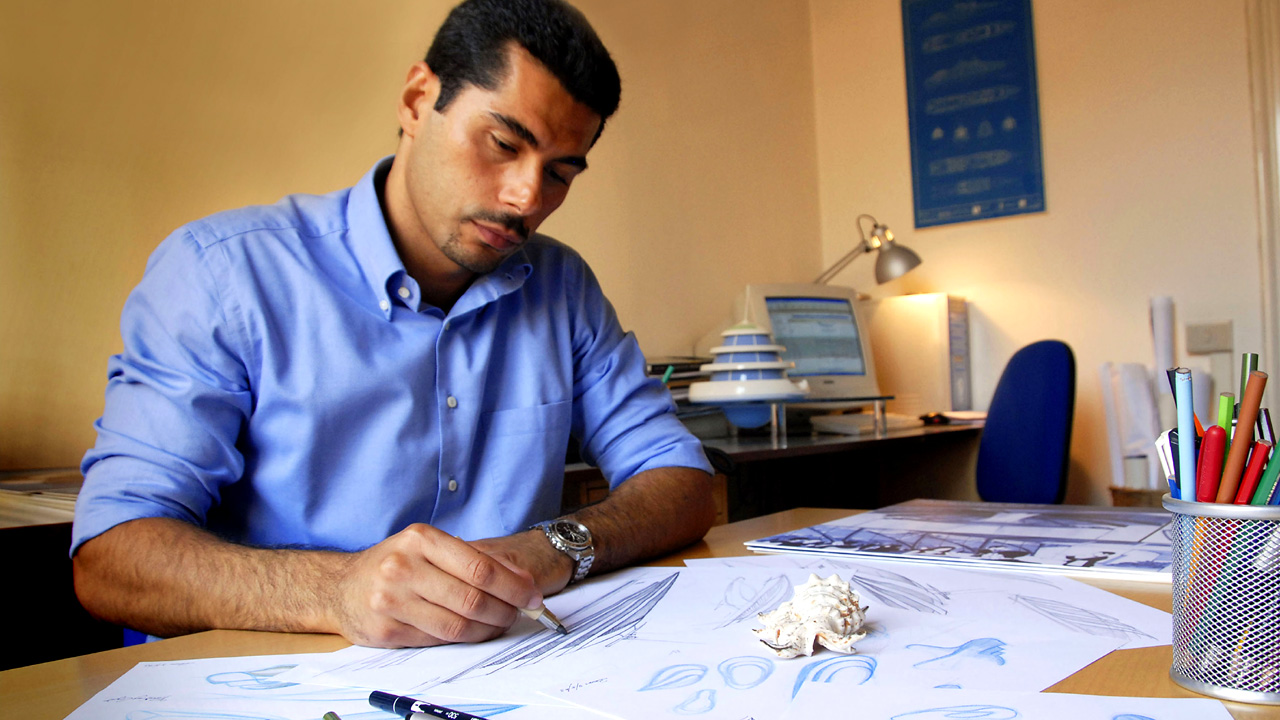
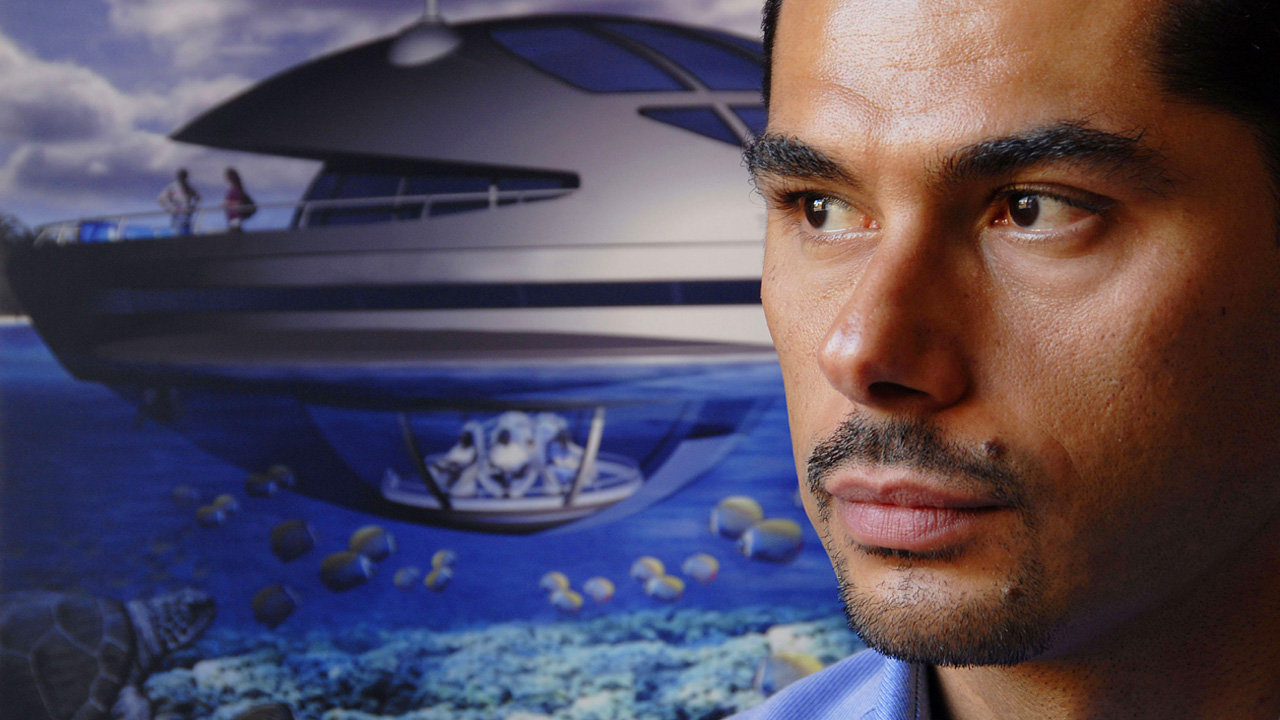
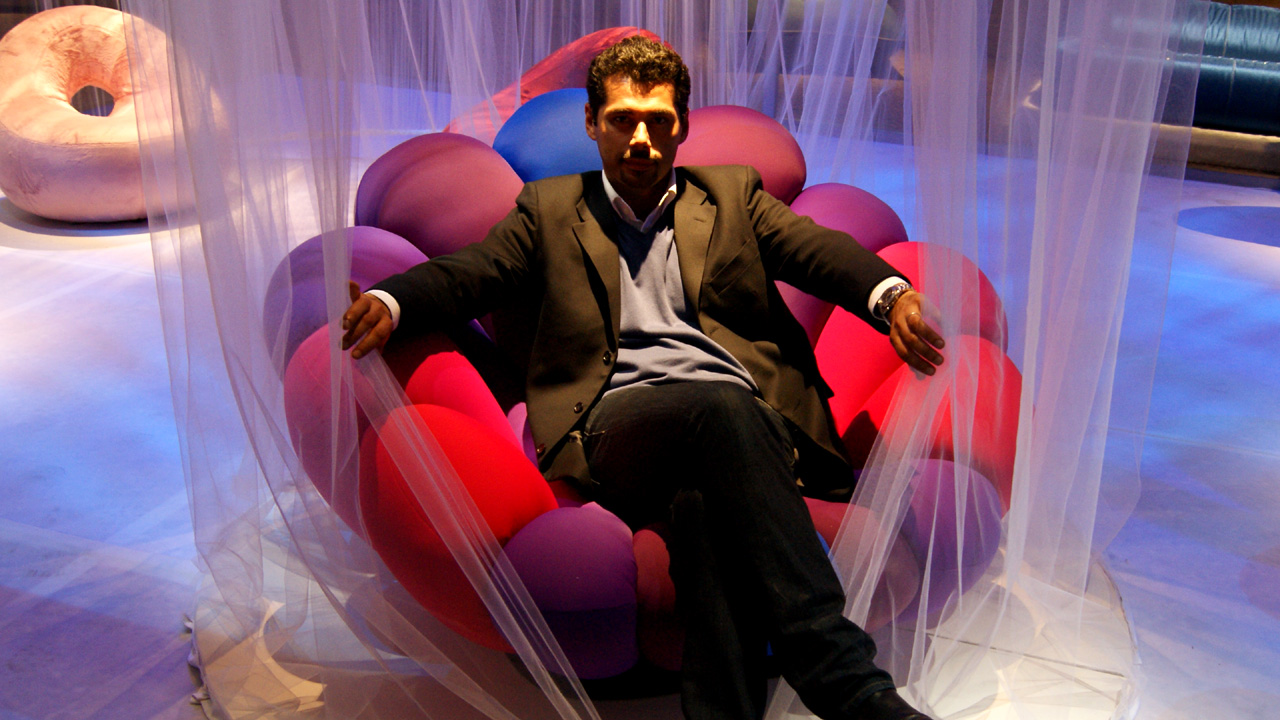
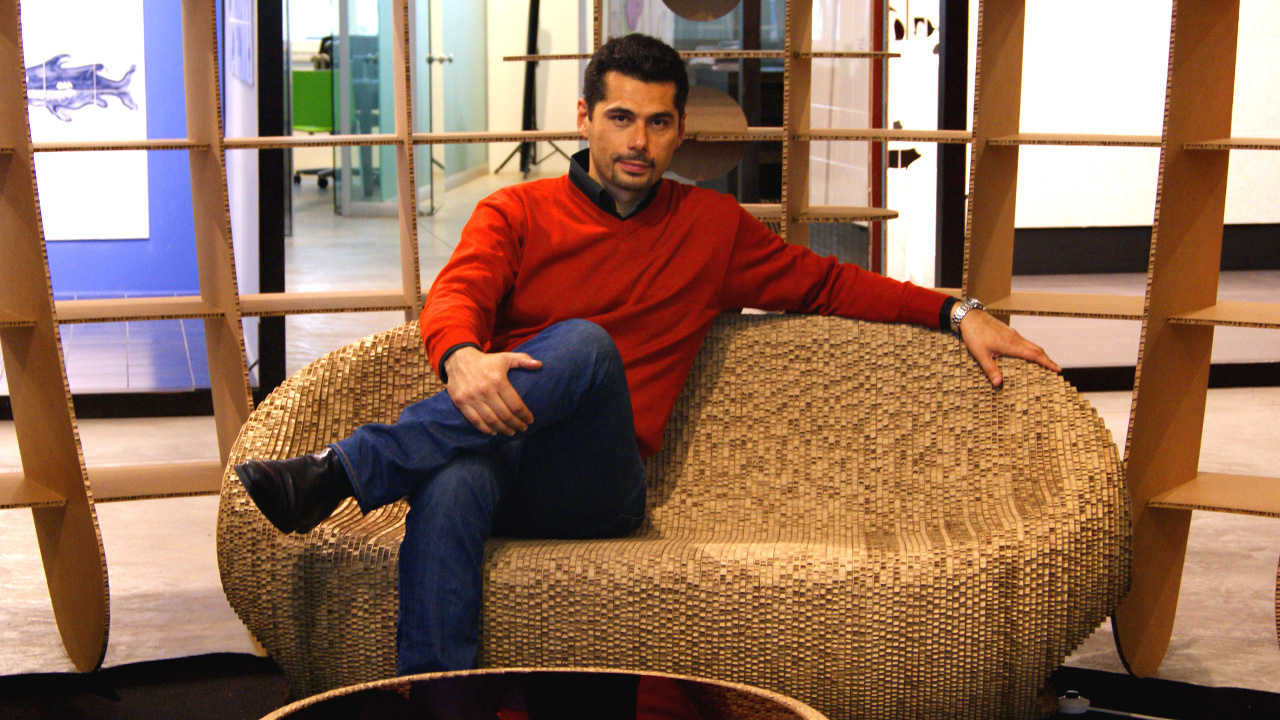
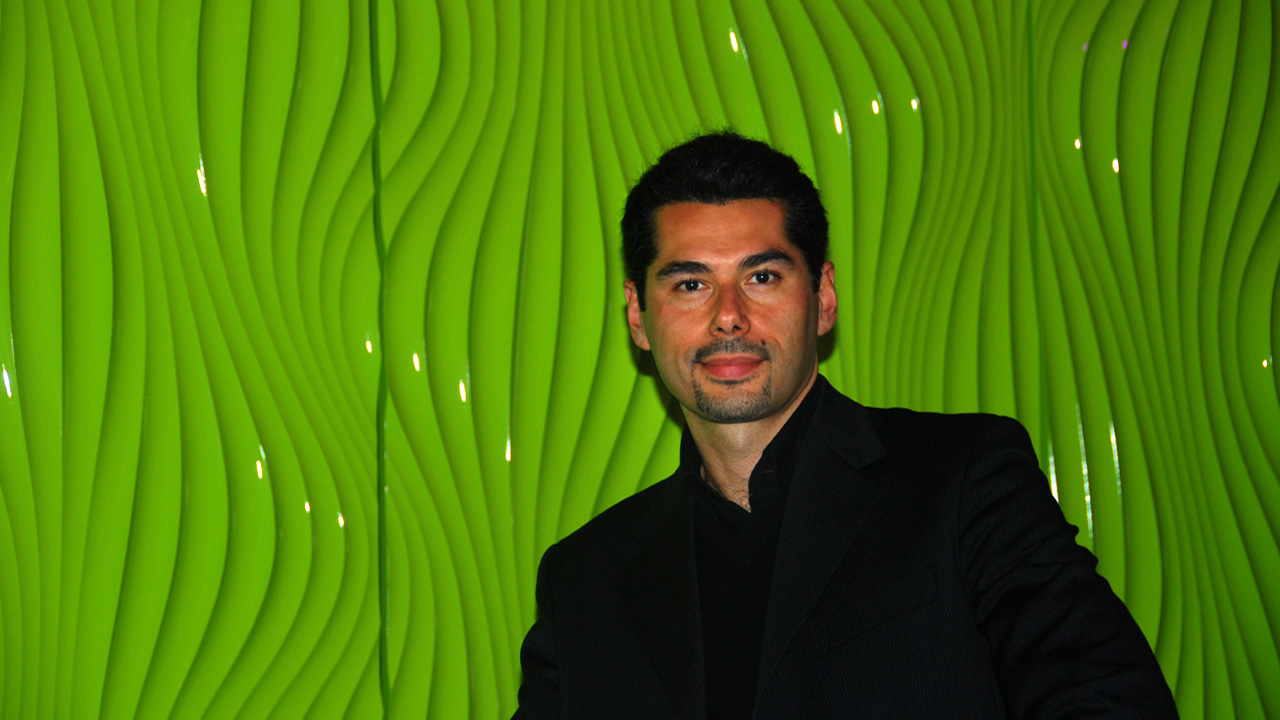
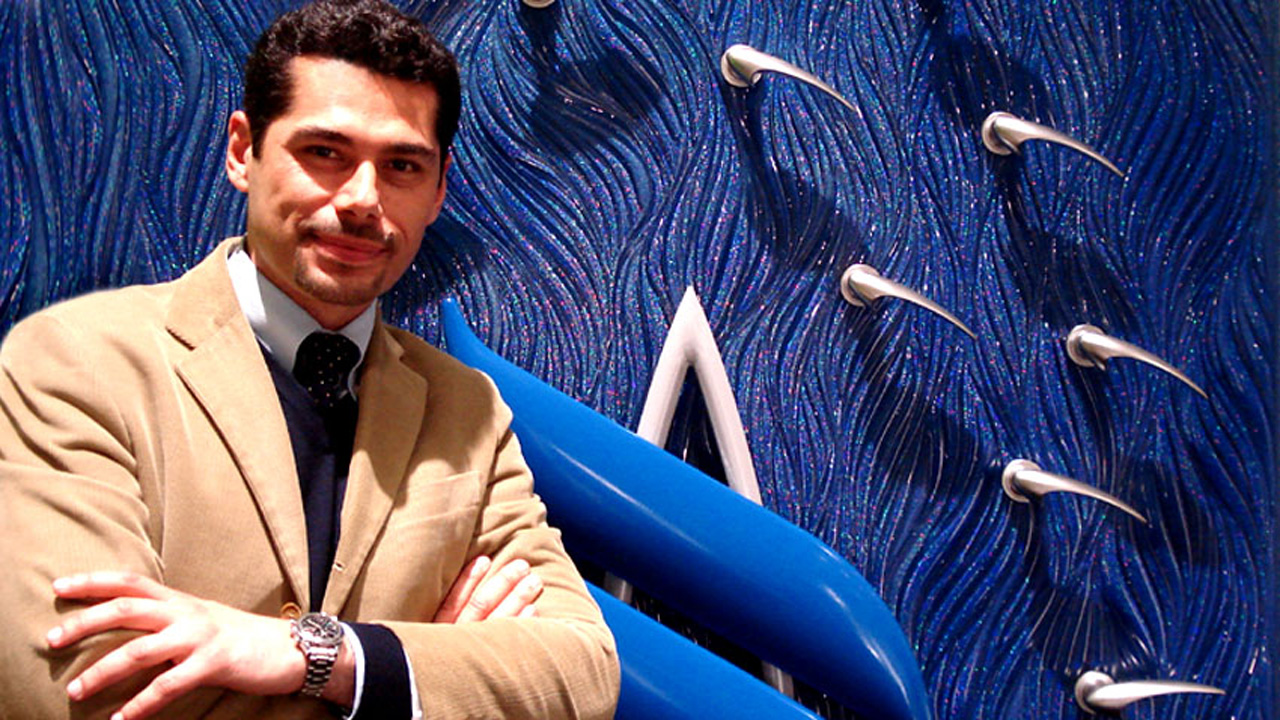
Giancarlo Zema
BiographyBIO | ABSTRACT
Giancarlo Zema was born in Rome in 1973, he graduated in architecture at the “La Sapienza” University of Rome, with professor Giovanni Zuccon, one of the most important naval architects on the international scene. After several international collaborations, in 2001 he founded the Giancarlo Zema Design Group (GZDG), an innovative architecture firm based in Rome. The studio aims to develop smart eco-sustainable projects, intelligent infrastrutture, self-sufficient floating habitats, intriguing yacht and interior design, competing with extraordinary hotel and resort projects on the water in Qatar and United Arab Emirates, pedestrian bridges in Bahrain, sports facilities in Libya and Azerbaijan, restaurant chains in Iran and vertiports in China. For ANAS, the public Italian highway company, architect Zema designs the “Green Island” smart charging stations for electric cars, distributed throughout the country, and the Smart Road Center in Rome. For Luminexence, a brand owned by the Turkish MITAS Group, he signs innovative collections of solar-powered street furniture, completely off-grid, receiving important international awards. In the industrial design sector, he collaborates with important Italian companies including: Giovannetti, Runtal, Origami Furniture, Luxyde, SmartKO, iSpace2o, creating unique and emotional settings and objects for them. In the years wins the prestigious Chicago Athenaeum GREEN GOOD DESIGN Awards, GREEN GOOD DESIGN Sustainability Awards, the BUILD Architecture Awards in UK, the GLOBAL FUTURE DESIGN Awards in USA, the HYDROGEN Awards in UK, RETHINKING THE FUTURE Awards in India and nominated BLUE AMBASSADOR by Blue Planet Economy Expoforum in Italy, confirming the (GZDG) internationally as one of the most innovative and green architecture firms. Giancarlo Zema is often a guest at conventions and television programs. Interviewed by the most important international magazines and newspapers in the architecture and design sector, The New York Times, The Sunday Times and Forbes have written about him. His projects are the subject of international exhibitions and exhibited by cultural institutions including La Triennale Milan Design Museum, The Venice Biennale, Ara Pacis Museum, Farnesina Design, that recognize his bold creativity and profound innovative strength. Such as today, he boasts over one hundred publications and numerous covers.
Giancarlo Zema was born in Rome in 1973, he graduated in architecture at the “La Sapienza” University of Rome, with professor Giovanni Zuccon, one of the most important naval architects on the international scene. After several international collaborations, in 2001 he founded the Giancarlo Zema Design Group (GZDG), an innovative architecture firm based in Rome. The studio aims to develop smart eco-sustainable projects, intelligent infrastrutture, self-sufficient floating habitats, intriguing yacht and interior design, competing with extraordinary hotel and resort projects on the water in Qatar and United Arab Emirates, pedestrian bridges in Bahrain, sports facilities in Libya and Azerbaijan, restaurant chains in Iran and vertiports in China. For ANAS, the public Italian highway company, architect Zema designs the “Green Island” smart charging stations for electric cars, distributed throughout the country, and the Smart Road Center in Rome. For Luminexence, a brand owned by the Turkish MITAS Group, he signs innovative collections of solar-powered street furniture, completely off-grid, receiving important international awards. In the industrial design sector, he collaborates with important Italian companies including: Giovannetti, Runtal, Origami Furniture, Luxyde, SmartKO, iSpace2o, creating unique and emotional settings and objects for them. In the years wins the prestigious Chicago Athenaeum GREEN GOOD DESIGN Awards, GREEN GOOD DESIGN Sustainability Awards, the BUILD Architecture Awards in UK, the GLOBAL FUTURE DESIGN Awards in USA, the HYDROGEN Awards in UK, RETHINKING THE FUTURE Awards in India and nominated BLUE AMBASSADOR by Blue Planet Economy Expoforum in Italy, confirming the (GZDG) internationally as one of the most innovative and green architecture firms. Giancarlo Zema is often a guest at conventions and television programs. Interviewed by the most important international magazines and newspapers in the architecture and design sector, The New York Times, The Sunday Times and Forbes have written about him. His projects are the subject of international exhibitions and exhibited by cultural institutions including La Triennale Milan Design Museum, The Venice Biennale, Ara Pacis Museum, Farnesina Design, that recognize his bold creativity and profound innovative strength. Such as today, he boasts over one hundred publications and numerous covers.
BIO | COMPLETE
Giancarlo Zema was born in Rome in 1973, he graduated in architecture at the “La Sapienza” University of Rome, with professor Giovanni Zuccon, one of the most important naval architects on the international scene. After several international collaborations, in 2001 he founded the Giancarlo Zema Design Group (GZDG), an innovative architecture firm based in Rome. The studio aims to develop smart eco-sustainable projects, intelligent infrastrutture, self-sufficient floating habitats, intriguing yacht and interior design. Since the beginning, Giancarlo showed his highly futuristic style but, at the same time, a style that is embedded in nature itself as to be unconsciously attractive. This is how the new housing on water types were created. They are the result of fervent creativity combined with a rigorous method and were imposed on the international scene as examples of a new way of living. With constant personal research, kept alive by his endless passion for architecture and love for soft shapes with clear biomorphic references, architect Zema expands onto new architectural horizons and boldly blends architecture and design into innovative projects that are impossobile to categorise in pre-existing schemes. Therefore, in 2001, he started creating his “sea creatures” in the field of architecture. These are the futuristic Trilobis (an innovative eco-yacht with underwater “visionarium” and hydrogen fuel cell motors) and Jelly-Fish (a floating house with underwater “visionarium”), both created for SemiSubGeneration. In 2004, he broke into the sailing world with the intriguing Poseidon, a 60-meter superyacht completely created in aluminium, for EXTRAORDINARYachts. In 2006, he was affirmed again with the impressive Amphibious, the first extra luxury semi-submerged hotel resort with floating suites in Qatar for Seaquest Marine Technology. Leaving no field unexplored, he opened the doors to the world of furniture design at the 2008 edition of the Salone del Mobile in Milan with the very attractive Ring Collection: table, chair and stool for Giovanetti Collezioni. During that same year, he confirmed his plastic abilities with his seductive Harps, itinerant exhibition installations made of DuPont™ Corian® for Runtal. In 2009, he started to collaborate with the Avanzini Group by creating the magical Petals exhibition from DuPont™ Corian® and continued in 2010 with the interesting limited editions of the Leaf Collection and Bright Woods Collection for Luxyde. During that same year, the Triennial Design Museum in Milan hosted, for three months, the DESIGNin’NATURE exhibition by Giancarlo Zema and, thus, presented his sculptural design creations to the general public. During the 2011 edition of the Milan Design Week, the historical showroom, Puntoluce, in Bergamo hosted the Underwater Design exhibition by Giancarlo Zema with his latest creations for Luxyde, the Octopus floor lamp made in DuPont™ Corian®. At the same time, the Academy of Fine Arts in Brera presented his colourful Anemone armchair designed for Giovannetti Collezioni, which became part of the prestigious Farnesina Design Collection and shown at the Ara Pacis Museum in Rome. He surprised and astonished all visitors to the international MADE Expo 2011 in Milan with his thorny Sea Urchin, an imposing installation with Ceta varnished steel tubular structures, symbolising a new way of building. Always aware of the impact that architecture and design have on the environment, he approached, with determination, the complex theme of ecological design for Smart City by creating Lotus Collection for LumineXence, the first ecological and furnishing modular system with photovoltaic technology and charging point for electric cars. It was an international success from the beginning, sealed, with its addition to the Farnesina Design Collection, chaired by Engineer Paolo Pininfarina, as an excellent example of the Made in Italy design. During the 2012 edition of the Ecomondo in Rimini, he continued to assert his research with the launch of the curvacious Lotus E-bike, an electrical bike a assisted pedaling for LumineXence.In 2013, he faced the theme of ecological funishing with the Canyon and Snake Collection, chairs, tables and lamps made of two-tone recycled cardboard for Origami Furniture, which were exhibited at the Olimpia Theatre in Milan as part of the Recyclable Planet exhibition by Giancarlo Zema, which was completely created from cardboard. In the same year he won the invited competition with a large solar-powered sports facilities, called Desert Flower an amazing sea view multi-function sport centre with a 40,000-seat stadium in Libya for Kolges. In 2014, he once again won the invited competition with the Shell project, the sinuous Baku Olympic Sailing Center for the Sailing Federation of Azerbaijan in the same year in collaboration with the new Italian brand Luxyde, he works toward the creation of the romantic Bright Stones Collection, a range of outdoor chairs and tables in backlit eco-cement. In 2015 he surprised again all ecologist builders with his WaterNest, solar-powered floating habitat for EcoFloLife. In 2016 at the 15th Venice Architecture Biennale, he exhibited his installation Sea Urchin entering into the permanent collection of Spazio Thetis at the Arsenale Nord, together with famous works of art by Jean Fabre, Michelangelo Pistoletto and Pinuccio Sciola. In the field of public infrastructures, in 2017 he designed Murex like a big shell, the first Bahrain bridge restaurant for Diyar Al Muharraq. In 2020 he created the Youna Garden a very particular chain of panoramic restaurants in Iran for Silk Road Stars Holding, in the same year he also signed the Green Island smart charging stations for electric cars for ANAS. In 2021 he designed the photovoltaic technology Smart Road Center in Rome for ANAS and will once again be in the future with the Baobab project, the first solar-powered vertiport for autonomous electric passenger drones for the Chinese EHang. In the years wins the prestigious Chicago Athenaeum GREEN GOOD DESIGN Awards, GREEN GOOD DESIGN Sustainability Awards, the BUILD Architecture Awards in UK, the GLOBAL FUTURE DESIGN Awards in USA, the HYDROGEN Awards in UK, RETHINKING THE FUTURE Awards in India and nominated BLUE AMBASSADOR by Blue Planet Economy Expoforum in Italy, confirming the (GZDG) internationally as one of the most innovative and green architecture firms. Giancarlo Zema is often a guest at conventions and television programs. Interviewed by the most important international magazines and newspapers in the architecture and design sector, The New York Times, The Sunday Times and Forbes have written about him. His projects are the subject of international exhibitions and exhibited by cultural institutions including La Triennale Milan Design Museum, The Venice Biennale, Ara Pacis Museum, Farnesina Design, that recognize his bold creativity and profound innovative strength. Such as today, he boasts over one hundred publications and numerous covers.
